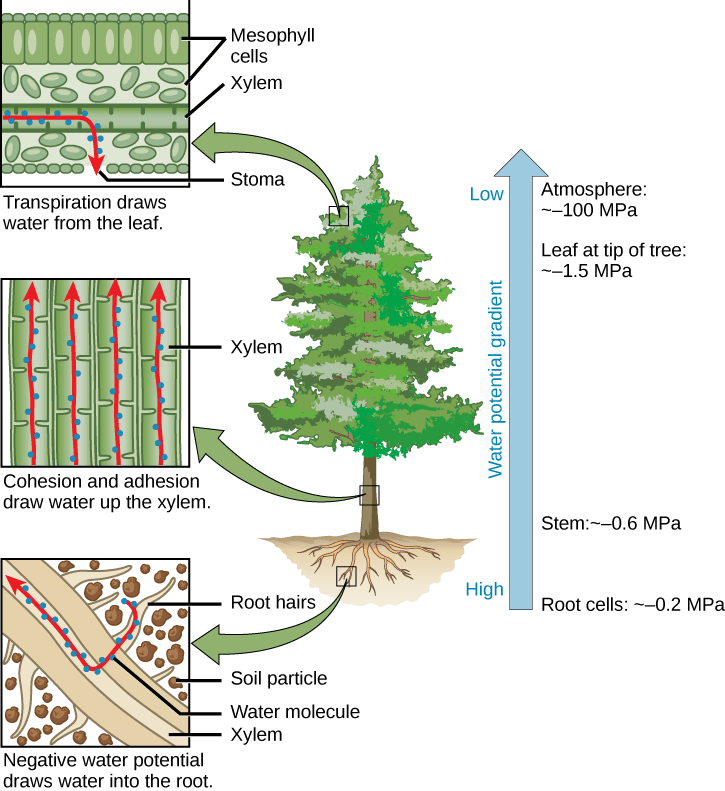
Inspiration from nature
Flow of sap in plants
The xylem tissue transports sap (water and nutrients) from the roots to the leaves. Evaporation of water from the leaves and cohesion between water molecules drives this flow. The sap pressure can fall below zero making it susceptible to cavitation, i.e., formation of vapor bubbles.
Plant xylem has evolved to protect the plant against cavitation. Structurally, the xylem comprises of conduits that are inter-connected to one another through porous membranes present on their sidewalls that prevent the growth of vapor bubbles. The pores range in size from a few nanometers to a few hundred nanometers and are typically much smaller than several contaminants present in water such as dust, bacteria and protozoa.
A section of branch or trunk that is longer than the length of a single conduit will force the water to pass through the pores, which can entrap contaminants and therefore function as a water filter. The animation video below illustrates how a xylem filter works.
Video developed by N.R. Fuller, Sayo Studio.
Answers to some common technical questions are provided in our FAQ page. Further details on the technology can be found in our technical manuscript published in Nature Communications.
Related articles and videos
‘Water filtration using plant xylem’, Boutilier et al., Plos One, 2014
‘Need a water filter? Peel a tree branch’, MIT News, 2014
‘How to build a plant xylem filter’, MIT Technology Review, 2013
